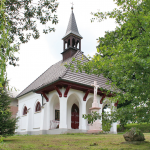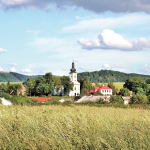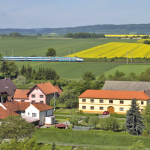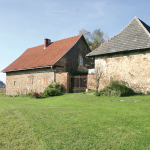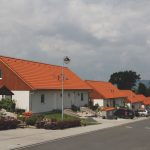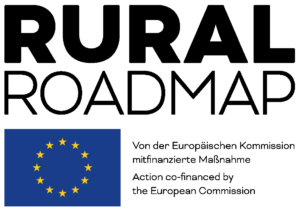
Jeseník nad Odrou, Moravian-Silesian region, Czech Republic
The municipality Jeseník nad Odrou with its some 1,940 inhabitants is part of the landscape protection area Poodří. It consist of five former independent villages with very diverse histories: some were traditionally German-speaking, while one was solely Czech-speaking.
Near the municipality, there is the European watershed; copious rivers (mainly the Oder), streams and ponds characterize the landscape, the element water is omnipresent. This has also to do with the fact that Jeseník nad Odrou has faced several floodings – the last one in 2009 with especially tragic consequences: five people lost their lives, 23 houses and 31 apartments were destroyed. Through the matchless solidarity and enormous commitment of the people, the damages were eliminated and new houses and apartments were constructed in more protected areas. Thereby, a massive emigration wave was prevented. In 2010, the active flooding areas were established, required flooding protection measures were affirmed and additional settlement spaces were defined.
Jeseník nad Odrou is developing into a rural municipality with a high quality of life and a valuable environment. All the necessary steps are discussed by the city council, the village committee and the population. Main focus is put on the preservation, renewal and development of local traditions.
Additionally, economic development is of great importance. Enterprises creating workplaces within the municipality were and are supported. Jeseník nad Odrou was characterized by agriculture until 1990: Back then, 700 people were in the agricultural cooperative, 100 in the food industry and 50 in metal production. After the Velvet Revolution, the workplaces shrank to a tenth. many objects were no longer used, some were transformed into typical Brownfields (industrial wastelands), many people emigrated. Due to the great traffic connection and the active sanitation and rededication of mentioned Brownfields, a revitalization and development of handicraft, wood processing, agriculture, shops, restaurants and accommodation facilities was possible.
The German-Czech neighborhood with all its historical ups and downs is also remarkable. In 2002, a memorial for the reconciliation was created on the local cemetery. It was then consecrated in the presence of many former German citizens. This was the trigger for further meetings and common projects, such as the renovation of the chapel. There is also strong collaboration between the municipality, the school and the parish. For example, more than 4,000 trees were planted in alamedas during 22 projects. It is also a major aim to achieve regional and intercommunal networking and collaboration. The citizens prove to be committed to the implementation of projects for the community and strengthen the solidarity through various social activities within the numerous associations.
Evaluated: 2014
